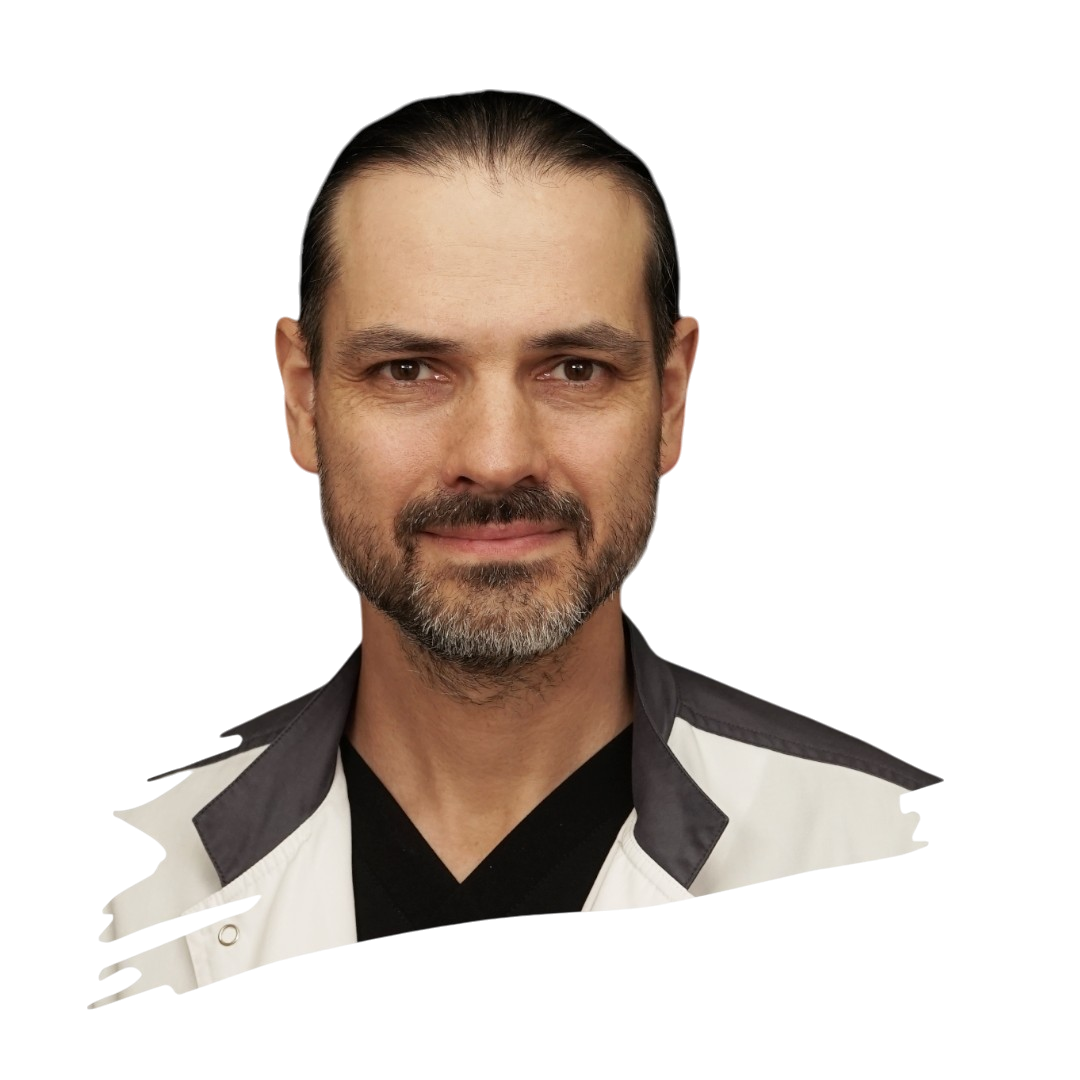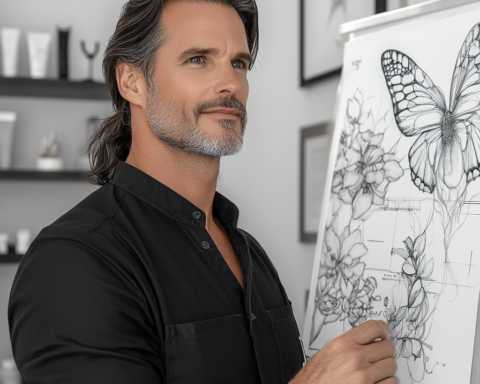Secondary Rhinoplasty: Correcting the Results of Previous Surgeries
In the world of plastic surgery, rhinoplasty (nose reshaping) holds a special place, attracting many patients who wish to change the shape of their nose. However, just like in any other medical field, the outcome of the first surgery may sometimes not meet expectations. In such cases, secondary rhinoplasty comes to the rescue—a procedure aimed at correcting the shortcomings that arose after the initial intervention. It is important to understand that only an experienced surgeon, capable of taking into account all the nuances of anatomy and the individual characteristics of the patient, can rectify the mistakes of the primary operation.
What is Secondary Rhinoplasty?
Secondary rhinoplasty involves a repeat surgical procedure on the nose, performed to eliminate unsatisfactory aesthetic results or functional issues, such as difficulty breathing through the nose. This operation is considered more complex than primary rhinoplasty due to changes in the nose’s anatomy after the first surgery, the presence of scar tissue, and other factors.
Trust your secondary rhinoplasty only to an experienced specialist who can accurately assess your needs and expectations.
Indications for Secondary Rhinoplasty
There are several reasons why secondary rhinoplasty may be necessary, including:
-
Unsatisfactory aesthetic result: Nose asymmetry, a problematic tip, or irregular contours may warrant repeat surgery.
-
Functional issues: Difficulty breathing, a deviated septum, or collapse of the nasal valves—all of these require intervention.
-
Complications after the first operation: Infection, excessive scarring, or perforation of the septum can significantly impact your health.
-
Trauma: After a nasal injury, correction may be needed, especially if you have already undergone primary rhinoplasty.
-
Age-related changes: Progressive changes in the shape of the nose over time may also lead to seeking secondary rhinoplasty.
Before making a decision, it is important to wait for complete healing after the primary surgery, which can take from 6 to 12 months. This will allow you to assess the final result and avoid unnecessary interventions.
Features of Secondary Rhinoplasty
Secondary rhinoplasty has several features that distinguish it from the primary operation:
-
Access method: Usually, an open approach is used, providing the surgeon with better visibility and control over the nose’s anatomy.
-
Use of additional tissues: There is often a need to replenish cartilage or bone tissue. In such cases, the surgeon may use either the patient's own tissues, donor tissues, or synthetic implants.
-
Working with scar tissue: The surgeon must be careful and attentive when excising or reorganizing scar tissue formed after the first surgery.
-
Septum correction: Septoplasty (surgery to correct a deviated septum) is often necessary to improve nasal breathing.
-
Modern technologies: The use of piezo-surgery and 3D modeling allows surgeons to plan surgeries more accurately and achieve better results.
Materials and techniques used during secondary rhinoplasty help achieve the desired outcome, and a highly qualified surgeon will minimize risks and shorten recovery time.
Technique of Secondary Rhinoplasty
The process of secondary rhinoplasty includes several key stages:
-
Preoperative planning: A thorough analysis of the problems, discussion of the patient's expectations, and 3D modeling to visualize the outcome.
-
Anesthesia: In most cases, general anesthesia is used to ensure maximum comfort.
-
Access: An open approach is typically employed with an incision on the columella (the tissue between the nostrils), allowing the surgeon to better visualize and manipulate the nasal anatomy.
-
Soft tissue dissection: Careful separation of the skin and soft tissues from the bony-cartilaginous framework of the nose.
-
Correction of bony structures: The need for osteotomy (cutting of the bone) or bone smoothing may arise during the operation.
-
Working with cartilages: Methods for reconstructing, reinforcing, or replacing cartilage structures may be involved here.
-
Nasal tip correction: Additional reinforcement and shaping of the nasal tip are often required to achieve a harmonious result.
-
Septoplasty: If the septum is deviated, the surgeon will correct it.
-
Closure of incisions: Suturing and shaping the proper contour of the nose.
- Applying dressings: Special dressings and a cast help hold the nose in the desired position after surgery.
Rehabilitation After Secondary Rhinoplasty
The recovery process after secondary rhinoplasty may take longer than after primary surgery. The main stages of rehabilitation include:
-
First week: Bed rest with the head elevated, cold compresses to reduce swelling, and taking prescribed medications.
-
Days 7-10: Removal of stitches and the cast, as well as the beginning of light physical activity.
-
2-4 weeks: Gradual return to daily life; however, active exercise remains prohibited.
-
1-3 months: Ongoing reduction of swelling and the opportunity to evaluate the preliminary results of the surgery.
-
6-12 months: Complete restoration of tissue sensitivity and final shaping of the result.
It is crucial to strictly follow all the surgeon's recommendations, as this significantly reduces the risk of complications and maximizes the surgical outcome.
Possible Risks and Complications
Like any surgery, secondary rhinoplasty carries certain risks, including:
-
Infectious complications: Consulting an experienced surgeon and following all recommendations will help minimize this risk.
-
Bleeding: While this can occur, an experienced surgeon usually knows how to prevent such situations.
-
Sensitivity issues: This is a temporary phenomenon that usually resolves over time.
-
Asymmetry or irregularities: These may occur, but additional correction is always possible.
-
Nasal septum perforation: This rare complication may require further interventions.
-
Breathing problems: If issues arise, it is essential to promptly consult your surgeon for an assessment.
- Unsatisfactory aesthetic result: It is important to discuss your expectations with the surgeon during the planning stage to avoid disappointment.
Since the risk of complications in secondary rhinoplasty is higher than in primary procedures, choosing an experienced surgeon and meticulously following all postoperative recommendations becomes especially important.
Choosing a Surgeon for Secondary Rhinoplasty
Your choice of surgeon is a key aspect of the successful completion of secondary rhinoplasty. Several important factors should be considered:
-
Specialization and experience: The surgeon should have significant experience specifically in performing secondary rhinoplasties.
-
Portfolio of work: Review "before and after" photos of other patients treated by the surgeon to understand their style.
-
Patient reviews: Read reviews and, if possible, speak with former patients for objective opinions.
-
Clinic's technological equipment: Modern equipment and methods can substantially enhance the quality of the surgery.
-
Approach to planning: A good surgeon will spend enough time discussing your wishes and expectations to create a tailored surgical plan.
-
Honesty and realism: A professional will always candidly discuss the possibilities and limitations of the procedure, helping to form appropriate expectations.
Conclusion
Secondary rhinoplasty is a significant step that can greatly enhance both the aesthetic appearance and functionality of your nose. With the right choice of specialist and strict adherence to all recommendations, you can achieve the desired result you have been dreaming of. However, remember that this is a complex operation requiring careful consideration and realistic expectations.
If you are considering secondary rhinoplasty, be sure to consult with several experienced surgeons. This will help you make an informed decision and choose the optimal path to your desired outcome. A correct approach and the professionalism of the surgeon will play a key role in achieving success and overcoming any potential challenges along the way.
Хотите быть в курсе последних новостей о пластической хирургии? Подпишитесь на мой Telegram-канал: https://t.me/by_staisupov
Любите смотреть видео? Еще больше полезной информации здесь: https://www.youtube.com/@staisupov
Все результаты пластических операций можно найти здесь: https://staisupov.ru/results
Задать вопрос и пообщаться с моим цифровым асситентом можно через телеграмм бота. Он поможет с подготовкой к операции и ответит на любой ваш вопрос: https://t.me/Staisupov_VU_bot







